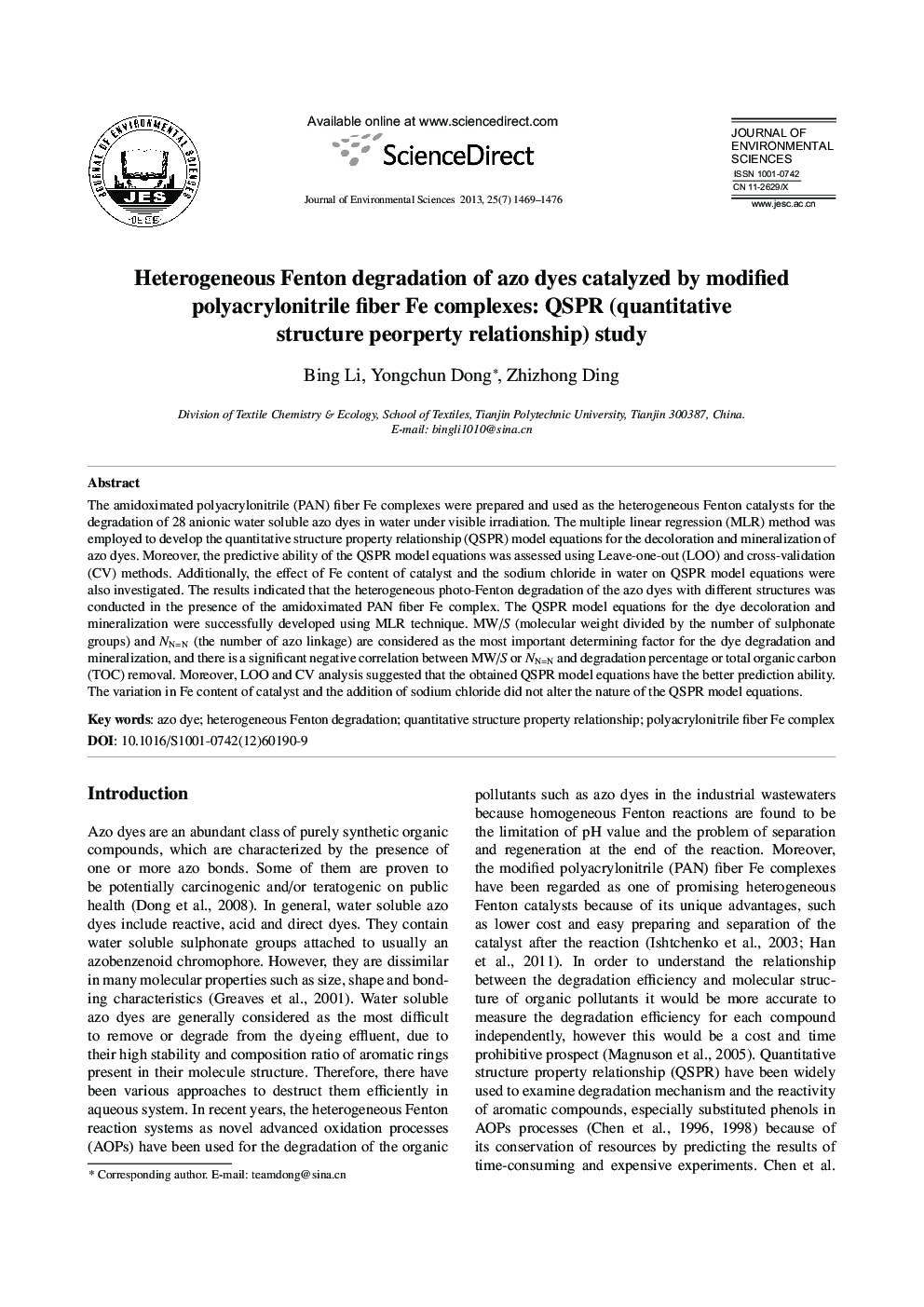| Article ID | Journal | Published Year | Pages | File Type |
|---|---|---|---|---|
| 4454860 | Journal of Environmental Sciences | 2013 | 8 Pages |
The amidoximated polyacrylonitrile (PAN) fiber Fe complexes were prepared and used as the heterogeneous Fenton catalysts for the degradation of 28 anionic water soluble azo dyes in water under visible irradiation. The multiple linear regression (MLR) method was employed to develop the quantitative structure property relationship (QSPR) model equations for the decoloration and mineralization of azo dyes. Moreover, the predictive ability of the QSPR model equations was assessed using Leave-one-out (LOO) and cross-validation (CV) methods. Additionally, the effect of Fe content of catalyst and the sodium chloride in water on QSPR model equations were also investigated. The results indicated that the heterogeneous photo-Fenton degradation of the azo dyes with different structures was conducted in the presence of the amidoximated PAN fiber Fe complex. The QSPR model equations for the dye decoloration and mineralization were successfully developed using MLR technique. MW/S (molecular weight divided by the number of sulphonate groups) and NN=N (the number of azo linkage) are considered as the most important determining factor for the dye degradation and mineralization, and there is a significant negative correlation between MW/S or NN=N and degradation percentage or total organic carbon (TOC) removal. Moreover, LOO and CV analysis suggested that the obtained QSPR model equations have the better prediction ability. The variation in Fe content of catalyst and the addition of sodium chloride did not alter the nature of the QSPR model equations.
